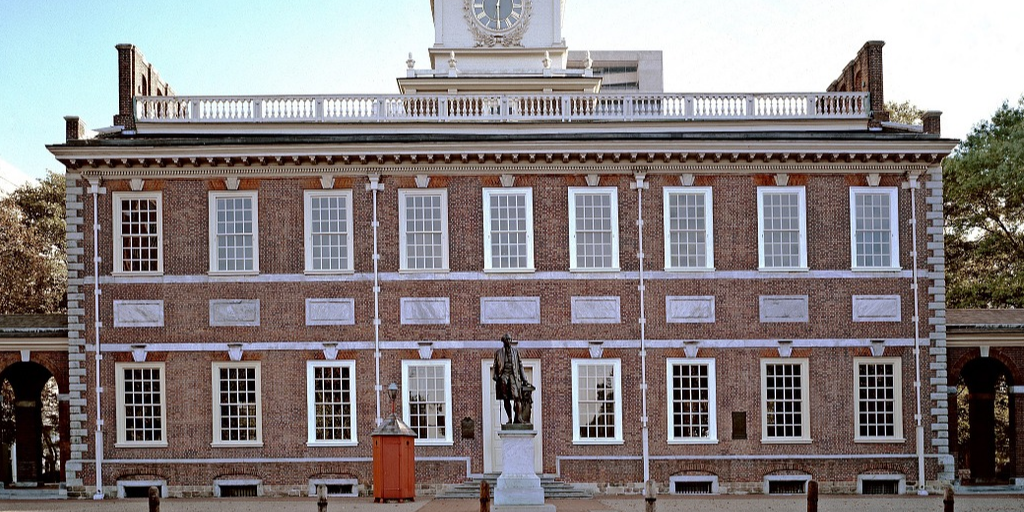Philadelphia was the “headquarters” of the colonies and the de facto capital during the Revolutionary War (1775-1783). Not until 1800, in fact, did Washington, D.C., become the official capital. Philadelphia also hosted the first Continental Congress at Carpenter’s Hall and the Second Continental Congress when several attendees signed the Declaration of Independence at Independence Hall. The early history of Philadelphia is fascinating. Those interested in a brief synopsis of Philadelphia history from 1600 that recounts the Swedish settlement of the area, and later Dutch and British control, as well as the critical role the city played in the Revolutionary War, can peruse this website. Here, however, we take a closer look at architecture in Philadelphia during the Revolutionary War.
Many buildings in Philadelphia, including the well-known Independence Hall, were designed and constructed in the Georgian style. Bearing the name of the four British monarchs (“the Georges”) of the House of Hanover, this style began to develop in the early 1700s by famed architect, Christopher Wren. Wren responded to the British aristocracy’s belief that the extravagant and monumental Baroque architecture then en vogue in continental Europe and England was of “questionable taste.” He introduced symmetrical design, classic proportionality and decorative elements to construction reminiscent of classical Italian style, particularly that of Andre Palladino.

Example of Palladian Architecture – Holkham Hall. (Image via Wikimedia Commons)
By the mid-18th century, Palladianism gave way to Neoclassicism. In this period the models for building architecture were classical Greek and Roman structures with austere use of Doric and Ionic elements.
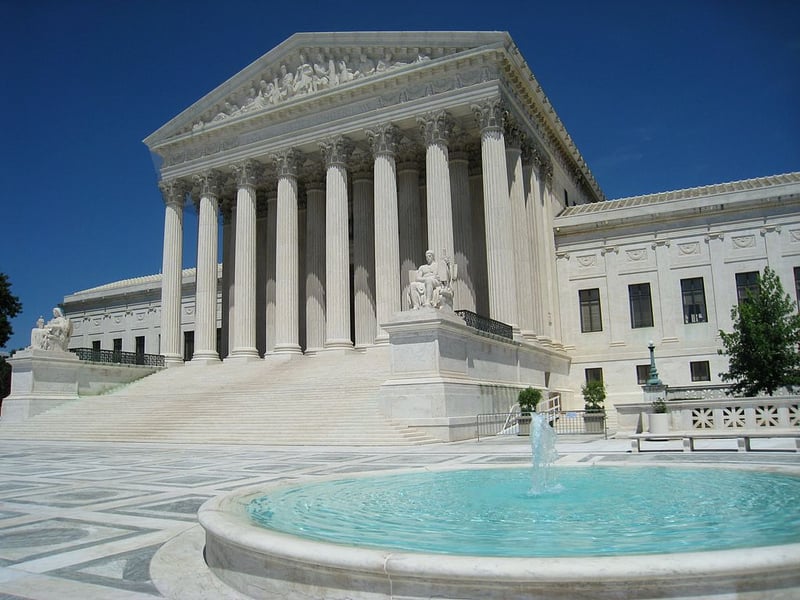
Greek Neoclassical Architecture – US Supreme Court. (Image via Wikimedia Commons)
Toward the end of the century, during the reign of George IV, a number of other styles, particularly Gothic Revival and Regency, became popular.
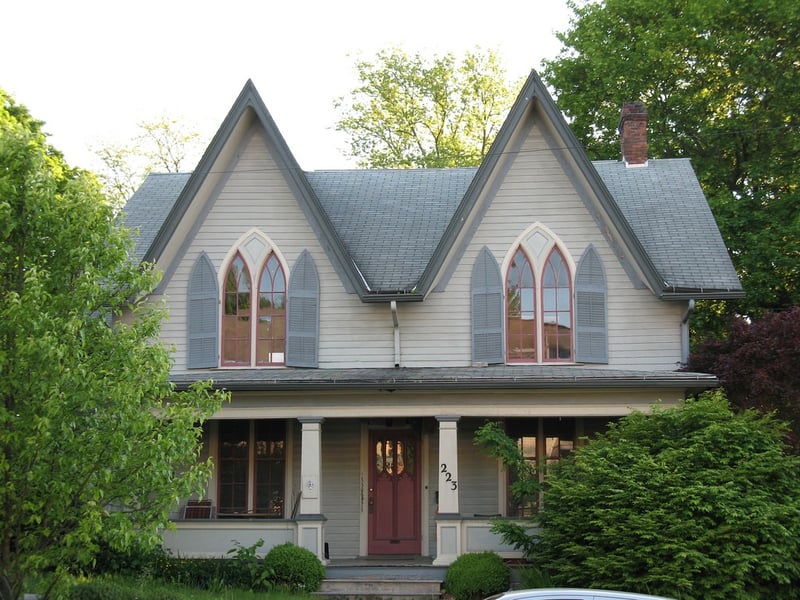
Gothic Revival House in Bellefonte, PA. (Image via Flickr by John Jacobsen)
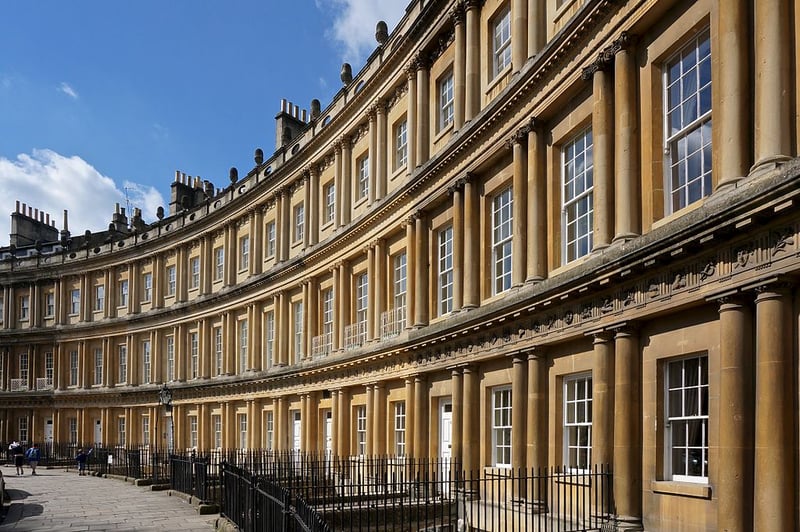
Regency Style in London - Bath Royal Crescent. (Image via Wikimedia Commons)
While most people think that “Georgian” merely is an architectural style designation, it is, in reality, a sociopolitical term referring to the art and architecture embraced by England and North America between 1714 and 1800.
The Georgian era includes the American Revolutionary War years, which occurred during the reign of George III, one of four Hanoverian kings. By the time of the Revolution, the Georgian style clearly exemplified bilateral symmetry based on a central axis, proportional relationships among all elements of design, a central hallway, and overall cubical or rectangular shapes (Spott, 2009). In England, perhaps one of the grandest examples of symmetry and proportionality is Buckingham Palace. Built by James I in the early 17th century, King George III acquired the property (then known as Buckingham House) in 1761 from the Duke of Buckingham, possibly because King James’ palace would become a bit crowded for his wife and 15 children.
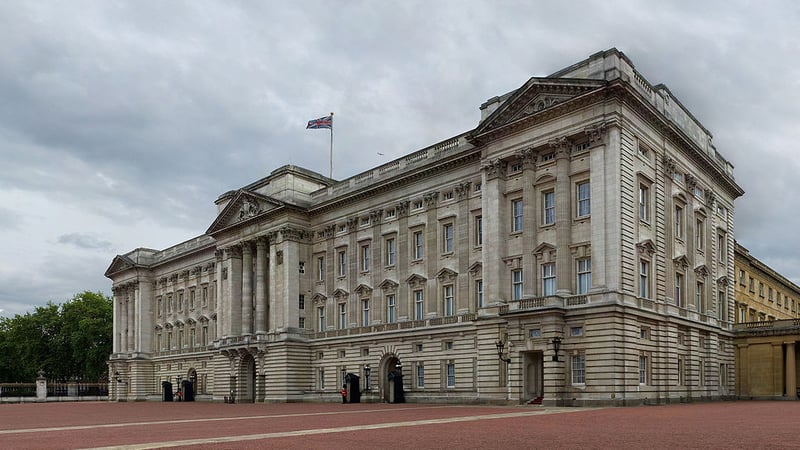
Buckingham Palace. (Image via Wikimedia Commons)
Meanwhile, in the Colonies, interpretations of the Georgian style varied. In the north, it was common to use wood with clapboard or shingle cladding or to imitate stone. However, for larger structures and public buildings, Georgian style usually meant brick and there seemed to be no shortage of bricks in Philadelphia.
Independence Hall
A tour of Georgian landmarks in the City of Brotherly Love surely must include Independence Hall.
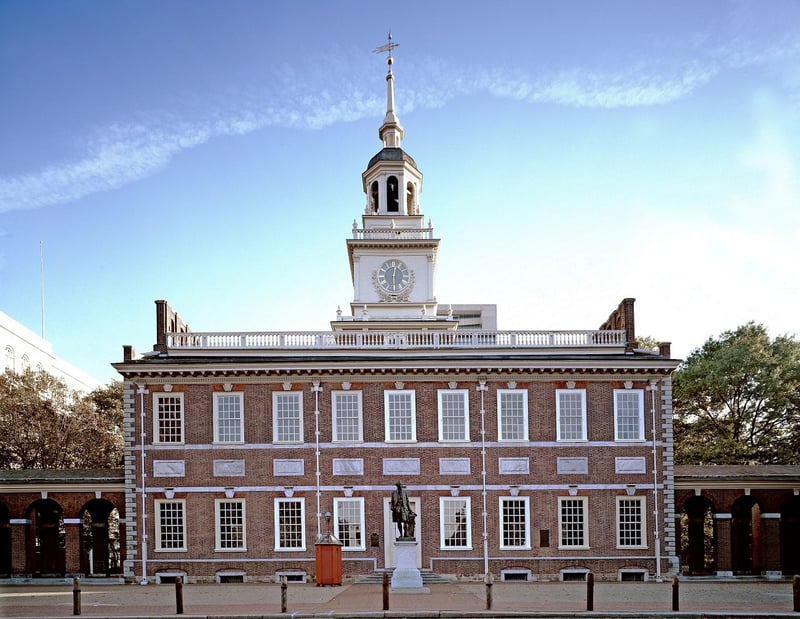
Independence Hall, PA. (Image via Pixabay by Skeeze)
The structure incorporates a simple exterior and excellent symmetry. Despite its simplicity, a few other structures in America have had such a profound impact on the course of history.
Reynolds-Morris House
Built by John Reynolds in 1787, the Reynolds-Morris House features a Flemish bond of an alternating red stretcher and black header brick and a doorway set between fluted and quilled pilasters.
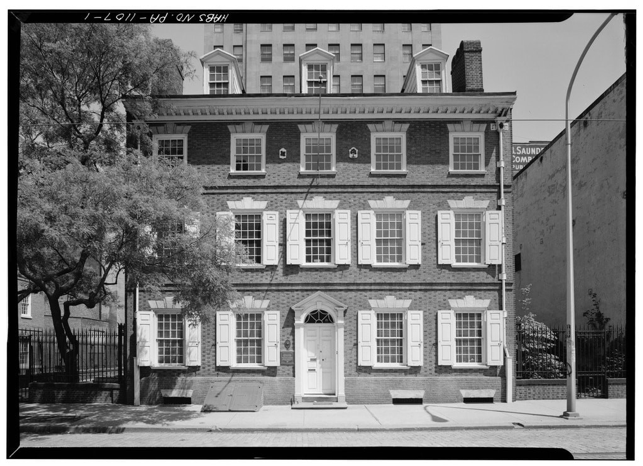
Reynolds-Morris House, 225 S. 8th Street. (Image via Wikimedia Commons)
Stenton Mansion
The Stenton Mansion was the country home of James Logan, colonial Mayor of Philadelphia and Chief Justice of the Philadelphia Supreme Court.
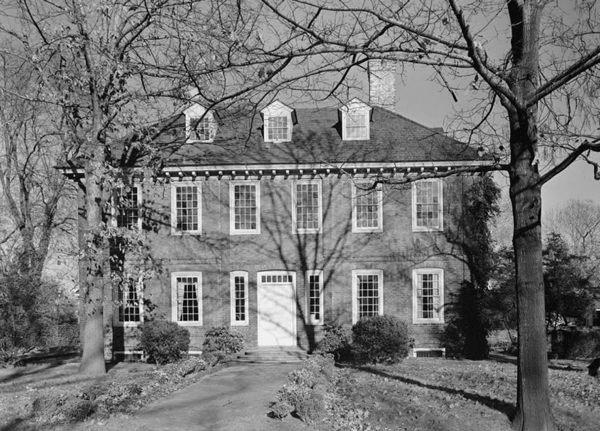
Stenton Mansion 4601 N. 18th Street. (Image via Wikimedia Commons)
This north Philadelphia landmark is an example of Early Colonial Georgian architecture.
Cliveden
Located in Germantown, a suburb of Philadelphia, Cliveden is an estate that was a major part of the American Revolution, even though it was built by Benjamin Chew to avoid the yellow fever outbreaks plaguing Pennsylvania.
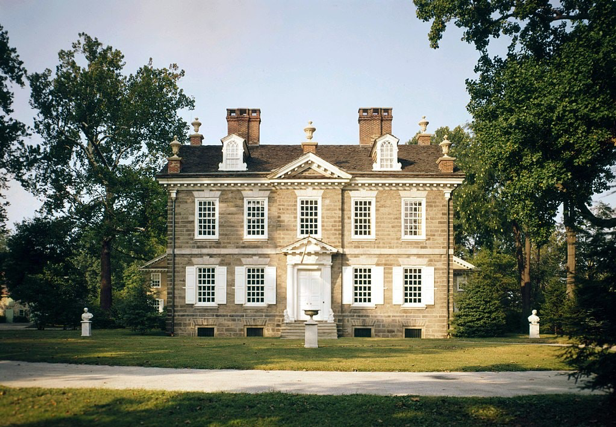
Cliveden, Germantown, PA. (Image via Wikimedia Commons)
Cliveden tells a story of America’s struggle for freedom. The house sheltered British troops from American attack during the Battle of Germantown and it has been home to seven generations of Philadelphia’s Chew family in the years that followed.
When the British established colonies in North America, they brought with them their cultural styles and practices. Many examples of Georgian architecture still stand today with some of the best examples in Philadelphia.


